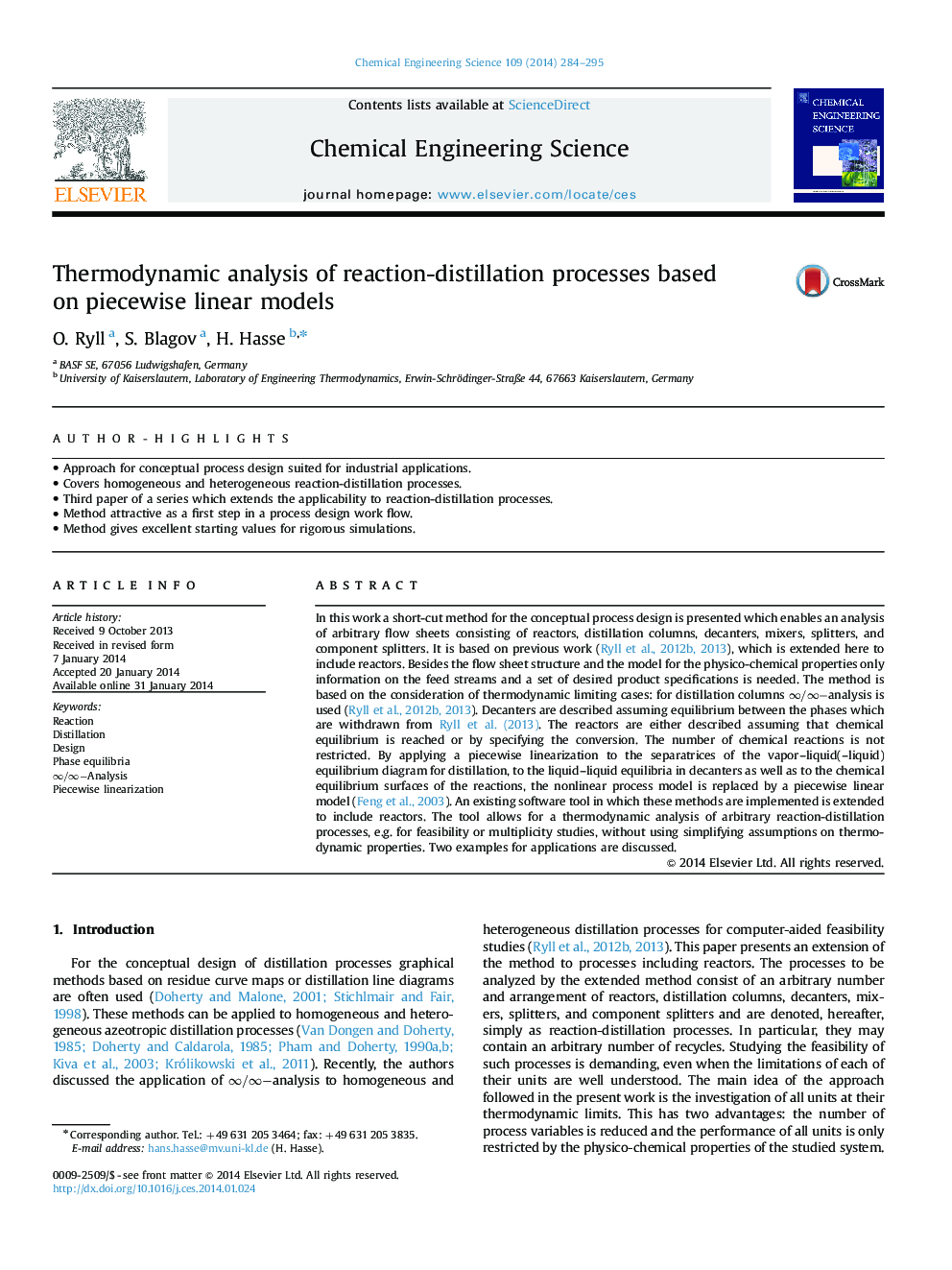| کد مقاله | کد نشریه | سال انتشار | مقاله انگلیسی | نسخه تمام متن |
|---|---|---|---|---|
| 154902 | 456873 | 2014 | 12 صفحه PDF | دانلود رایگان |
Author-Highlights
• Approach for conceptual process design suited for industrial applications.
• Covers homogeneous and heterogeneous reaction-distillation processes.
• Third paper of a series which extends the applicability to reaction-distillation processes.
• Method attractive as a first step in a process design work flow.
• Method gives excellent starting values for rigorous simulations.
In this work a short-cut method for the conceptual process design is presented which enables an analysis of arbitrary flow sheets consisting of reactors, distillation columns, decanters, mixers, splitters, and component splitters. It is based on previous work (Ryll et al., 2012b and Ryll et al., 2013), which is extended here to include reactors. Besides the flow sheet structure and the model for the physico-chemical properties only information on the feed streams and a set of desired product specifications is needed. The method is based on the consideration of thermodynamic limiting cases: for distillation columns ∞/∞-analysis∞/∞-analysis is used (Ryll et al., 2012b and Ryll et al., 2013). Decanters are described assuming equilibrium between the phases which are withdrawn from Ryll et al. (2013). The reactors are either described assuming that chemical equilibrium is reached or by specifying the conversion. The number of chemical reactions is not restricted. By applying a piecewise linearization to the separatrices of the vapor–liquid(–liquid) equilibrium diagram for distillation, to the liquid–liquid equilibria in decanters as well as to the chemical equilibrium surfaces of the reactions, the nonlinear process model is replaced by a piecewise linear model (Feng et al., 2003). An existing software tool in which these methods are implemented is extended to include reactors. The tool allows for a thermodynamic analysis of arbitrary reaction-distillation processes, e.g. for feasibility or multiplicity studies, without using simplifying assumptions on thermodynamic properties. Two examples for applications are discussed.
Journal: Chemical Engineering Science - Volume 109, 19 April 2014, Pages 284–295
